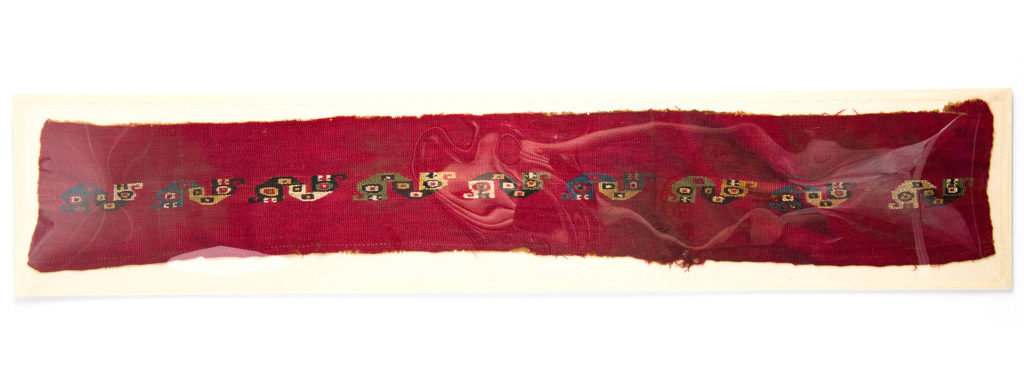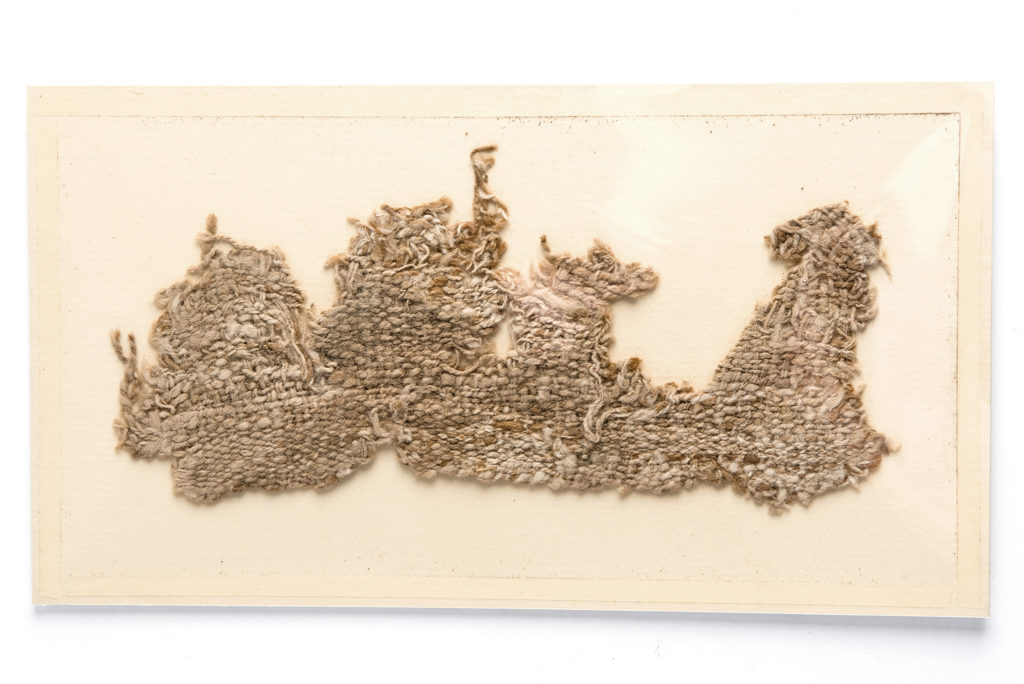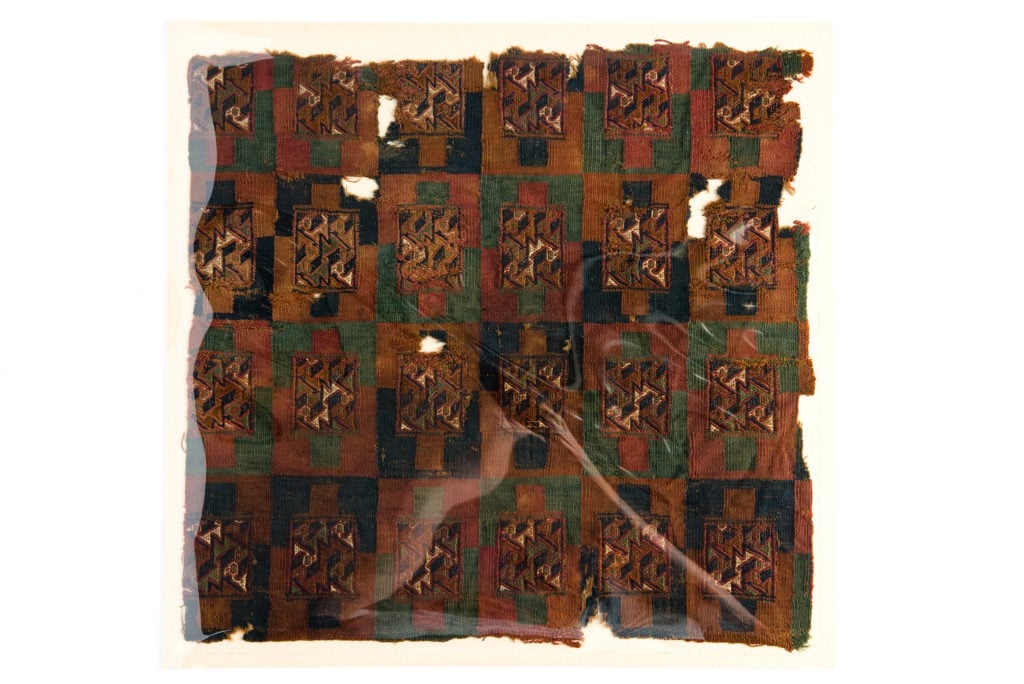Storeroom Stories: Peruvian Textiles
PAST EXHIBIT
A testament to the impressive breath of The Charleston Museum’s collections, this month’s Storeroom Story exhibit features textile remnants from four (4) pre-contact indigenous cultures of Peru, the Paracas, Nazca, and Lima cultures, as well as from the proto-colonial era Inca Empire which received Spanish incursion in the 1530s.
Often when people think of pre-Spanish Peru they think of the Inca. However, quite a few state level societies existed in Peru hundreds of years before the rise of the Inca Empire in the mid 15th century. The earliest of these cultures is called Chavin and dates to ca. 1,800 B. C. Other cultures investigated archaeologically include, the Lima, Nazca, and the Paracas Cultures of central and south coastal Peru, as well as the Moche, Chimu, and Recuay of northern Peru, among others. Most of these societies were clearly socially stratified pre-industrial urban states with characteristic centralized government and religious institutions, extensive trade networks, and highly adaptive and effective subsistence strategies. These societies were also characterized by well developed arts and crafts production – commodities which served religious as well as economic needs.The Paracas Culture, spanning several hundred years, is world famous for ancient textiles – many of which were burial wrappings. This cultural tradition developed among a people who lived close to the Pacific ocean, just south of Lima, thus many of their material remains illustrate marine themes and characters. Paracas textiles and ceramics can also depict symbolism of the earlier Chavin Culture including priests or shamans dressed to impersonate gods. Figures on textiles with mixed human and animal characteristics were popular as well. Paracas cultural tradition(s) began as early as 600 B.C., however the apex of textile art occurred between 450 and 175 B.C.
Paracas Culture (ca. 450 -175 B. C.) – A red wool and cotton tapestry strip with a band of geometric figures down the center. Wefts are interwoven with pairs of warps and fine cotton wefts are woven over and under.
The Nazca Culture (A.D. 100 -800) was located in five (5) river valleys south of the Paracas Culture area. Perhaps most famous for huge geoglyphs of animals and lines seen in totality only from the air, the Nazca Culture also produced renowned polychrome ceramics and textiles. Textiles were made from wool or cotton and polychrome designs were produced primarily by brocade and tapestry techniques. At times, plain cloth was painted with motifs and patterns similar to those portrayed on pottery. Nazca textiles, as well as pottery, was produced by local craftspeople in small villages and hamlets.
The Lima Culture (A.D. 200 – 800) was situated north of the Nazca Cultureabout midway on the Peruvian coast. Early archaeological investigations of this population(s) have been performed in the Rimac, Chancay, Lurin, and Chillon valleys in the vicinity of Lima, the current capital of Peru which itself is located in the Rimac valley. Lima Culture pottery and textiles was highly influenced by other pre-Spanish contact cultures such as the Nazca, Moche, Ayacucho, and the Recuay. Lima textiles were most often tapestry patterns produced with multi-colored wefts usually in white, red, yellow, blue, green, gray, as well as black. Brocade is rare, but painting was a common decoration. Interlaced fish and crosses and a variety of geometric motifs were popular on Lima textiles and pottery.
Lima Culture (ca. 200 -800 A. D.) – A naturally colored wool textile fragment collected from outside the site of Huaca Huallamarca in downtown Lima, Peru. It is possibly a section of a burial textile.
The Inca Empire (A.D. 1430 -1532), known as “Tawantinsuyu”, extended from Ecuador, in the north, to Chile in the south. This culture’s extensive road system was actually larger than that of ancient Rome. The manufacture of textiles was of great importance to Inca society. Textiles were the most desired form of tribute from conquered populations and routinely used as currency. Textiles were made from cotton or wool with alpaca or vicuna wool being the most valuable. Geometric patterns were most often used in the production of cloth. Distinctive square shaped motifs, called tocapu, may have indicated the status of the owner. It is often found on royal garments. At times, textiles, such as mantles, were covered with feathers. The most popular manufacturing technique for Inca cloth was tapestry.


